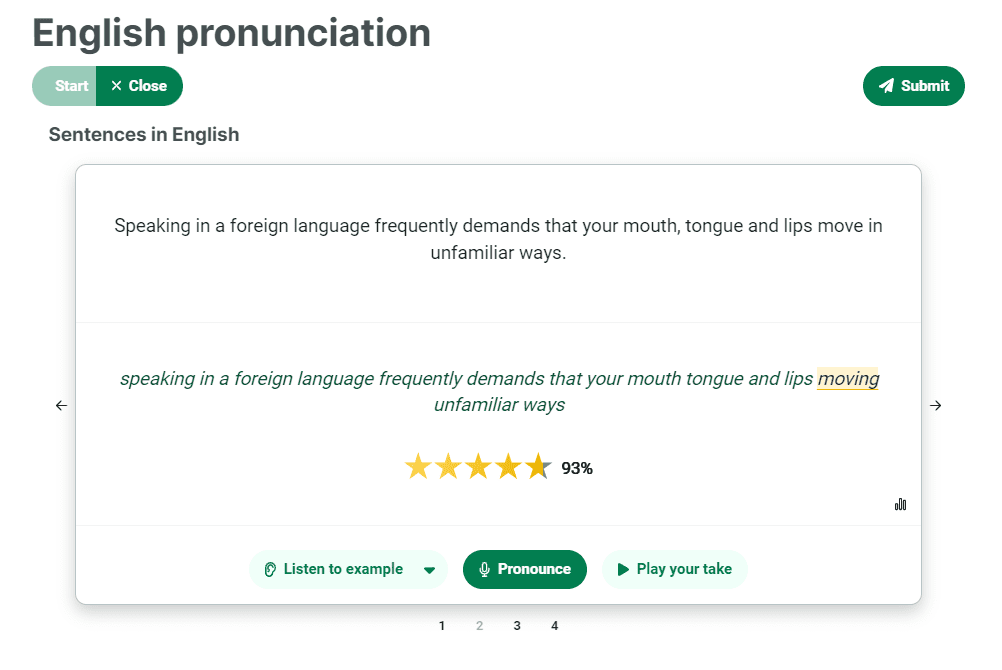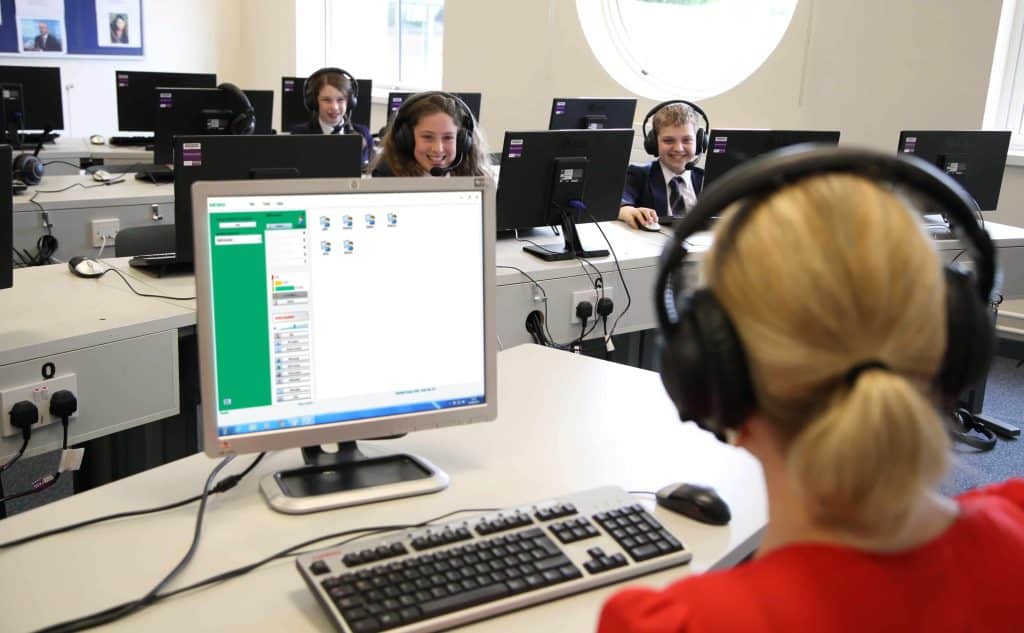Technology is having a growing impact on foreign language learning worldwide. The landscape of language teaching and language learning has transformed so rapidly that the formal classroom does not serve as the primary language learning site anymore. Enhancing language learning with e-learning apps and technology is nothing new since our formal education system has used different educational technology tools and multimedia based learning content for already decades.
We at Sanako have more than 60 years of experience in developing technology tools for teacher-led language instruction and we have seen many technological trends during this period. Some technology tools and ways to use technology in language teaching and learning are fads and they disappear as fast as they came, but the underlying principles and reasons to use technology are still relevant today and will be in the future. Overall, technology has not only transformed the way languages are taught but also made language learning process more accessible, engaging, and personalized for students worldwide. In this article we want to share some examples how technology can support language teachers and improve their students’ language acquisition.
The growing importance of computer-assisted language learning
Mohammad Reza Ahmadi (2018) argued that educational technology tools appeal greatly to language instructors due to their contribution to enhancing learner autonomy as well as students’ active engagement and maximizing positive language learning outcomes. The use of technology has become an important part of the learning process in and out of classrooms and is viewed as the core requirement in modern schools and universities.
Modern language teaching and learning technology includes but is not limited to language labs, online learning platforms, digitalization, multimedia devices, mobile phones, learning apps, flashcards, audio/visual multimedia content (like podcasts and videos), EdTech solutions, and social media which can facilitate faster and more comprehensive language progression. For example, the application of multimedia content in class could integrate print texts, video, learning games, and the internet to familiarize students with language vocabulary and structure or let them practice pronunciation and speaking with native speakers.
How educational technology tools support teachers?
1. Creates a better learning environment
In a technology-driven learning environment, flexible classroom spaces where connected devices, audiovisual tools, and purposeful furniture are integrated facilitate positive engagement of students and the mix of independent, small-group, and whole-class learning that is now viewed as essential to student success (EdTech staff, 2018).
2. Increases the possibility of a much wider range of language teaching methods and resources
Compared with traditional language teaching methods that could make students passive and bored, modern language teaching strategies primarily utilize multimedia, communicative language teaching approaches, various available resources, and educational games giving students opportunities to meaningfully increase their exposure to the target language and thus make their own knowledge. Language teachers can use a wide range of digital resources, such as e-books, audio files, videos, and online articles, to supplement their teaching materials. These resources offer increased flexibility and can be easily updated, making them a valuable tool in language teaching.
3. Connects the classroom with the real world
New technology in the language classroom such as videos, images, and software solutions empower teachers to incorporate the larger real world into the classroom. Turning the theories into practical experiences motivates students to practice and be deeply immersed in second language learning.
4. Saves time in lesson planning and organization
Technology provides tools and platforms that help teachers plan, organize, and share their lessons more efficiently. Learning management systems (LMS) and dedicated language teaching platforms like Sanako Connect enable teachers to manage course content, assignments, and assessments in a centralized online location.
5. Expands the opportunities for continuous professional development (CPD)
Online courses, instructional videos, webinars, and e-conferences provide opportunities for language teachers to continue their education and develop new skills related to educational technology and language teaching pedagogy.
How technology in language learning supports students?
1. Wider exposure to the target language and cultural contexts
Technology increases the students’ opportunity for authentic interaction with native speakers and other language learners at various levels within or outside the classroom. Practice leads to perfection and technology-rich language learning makes it possible.
2. Higher motivation and attention during the language course
Transforming from passive recipients to active learners, students might feel very excited about language learning and are motivated to practice more, using devices with which they can practice a language through features such as voice recognition and interactive multimedia exercises, etc.
3. Flexible learning
Much more freedom is given to students within the classroom to decide how they approach the language and choose when and where to learn outside the classroom. Self-decision making and individual responsibility-taking stimulate more profound and enriching linguistic immersion.
4. Adaptive learning
Technology has made it possible to create adaptive learning systems that can track a student’s progress and adjust lessons accordingly. This helps provide a more tailored learning experience, making it easier for students to learn at their own pace and focus on areas they need improvement in.
How software solutions improve efficiency and effectiveness in all core language skills?
Pronunciation and speaking skills
Learning how to pronounce foreign words and sentences is a key starting point of language learning. Displaying video clips for students could provide detailed guidelines that show how to move their tongue and jaw in the right way to produce a certain sound. Speech recognition technology will help students correctly pronounce common words and phrases and they will receive targeted feedback and scoring to get the sounds just right.
Below is a screenshot from Sanako Connect software solution demonstrating its Pronounce feature. This feature allows teachers to copy-paste any text material and the system transforms that text into spoken audio. It supports most modern languages. Students then listen these native-live speech models and record their own pronunciation for comparison. The speech recognizer technology then provides students automatic feedback and scoring based.

Apart from allowing the individual practice, software solutions can group students in pairs for spoken interaction and make communication more productive. Hence, teachers can manage language class more effectively and allow students to invest more time into speaking and active learning.
Listening skills
Teachers can launch a wide range of graded listening resources specifically designed for L2 learners to improve listening skills. A number of available websites and authentic listening materials such as TED talks and news broadcasts could be utilized based on what students already learned and their interests. Every learner can have a truly personalized experience even if they are learning the same topic.
Reading skills
Reading comprehension requires the mastery of fundamentals, language, and higher-level thinking skills. Teachers could select available materials, from those for vocabulary building to those for test preparation, so as to improve students’ reading comprehension step by step. Software solutions keep track of students’ progress which improves their awareness of their weaknesses and strengths and, thus, provides tailored reading texts for boosting specific skills.
Writing skills
Language learning software could function to brainstorm and visualize students’ ideas, organize their information sequentially, and more. Spell-checking tools automatically check everything students type, making it easy to spot and fix errors quickly. Blogs enable students to create more expressive personal writing or to peer review when revising shared drafts of written work.
Whatever language you teach and whatever language teaching approach you use to teach it, Sanako’s market-leading software tools include a wealth of unique features that help language educators teach languages more efficiently and more successfully. It’s why the world’s leading educational institutions choose Sanako as their preferred supplier to support online and in-person lesson delivery.
If you’d like to find out more about how Sanako’s language teaching products could transform your institution’s language teaching and learning programs, please contact us now to arrange your FREE demo!
This blog post was last updated 26 September, 2023.
References used in this article:
Alqahtani A. (2019). The use of technology in English language teaching. Frontiers in Education Technology., 2(3). DOI:10.22158/fet.v2n3p168
EdStaff (2018, February, 12). What Is a Modern Learning Environment? https://edtechmagazine.com/k12/article/2018/02/what-modern-learning-environment
Richards, J. C. (2015). Technology in Language Teaching Today. Indonesia Journal of English Language Teaching, 10(1), 18-32.

